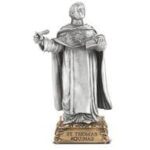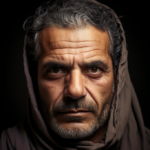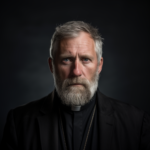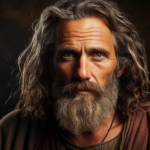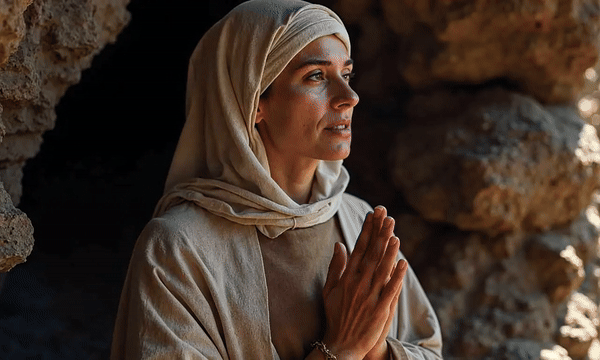
St. Rosalia
St. Rosalia
When she lived:
Saint Rosilia, the enigmatic hermit of the Sicilian hills, is believed to have lived during the early medieval period, around the 10th century. However, the exact dates of her birth and death remain shrouded in mystery, adding to the allure of her story.
Where she lived:
Saint Rosilia’s secluded life unfolded amidst the rugged beauty of the Sicilian mountains. Legends describe her dwelling in a hidden cave, nestled in the picturesque hills near Palermo, Italy. The serene landscapes and mystical ambiance of her chosen abode only added to the fascination surrounding her life.
Notable world events during the time of their life:
- The Great Comet of 961 (March 7, 961): A spectacular celestial event, the Great Comet of 961 graced the night skies during Rosilia’s time. Its appearance sparked both fear and wonder among people, inspiring various interpretations and superstitions. Some believed it was a harbinger of doom, while others saw it as a sign of celestial blessings.
- The Rise of the Fatimid Caliphate (909): The establishment of the Fatimid Caliphate in North Africa marked a significant political and religious shift in the Islamic world. The Fatimids were known for their tolerance towards religious minorities, which might have influenced Rosilia’s spiritual journey and interactions with diverse faiths.
- The Invention of the Magnetic Compass (11th century): During Rosilia’s lifetime, the magnetic compass was invented in China and gradually spread to the Western world. This revolutionary navigational tool transformed maritime exploration, enabling sailors to venture into uncharted waters with greater confidence.
- The founding of Al-Azhar University (970): In Cairo, Egypt, the renowned Al-Azhar University was established during Rosilia’s era. This institution became a center of learning, attracting scholars from various disciplines and fostering intellectual exchange across cultures.
In the pantheon of Catholic saints, few shine as brightly as Saint Rosalia, Palermo’s celestial guardian. Revered as the patron saint of purity, solitude, and renewal, this 12th-century hermit has captured hearts and imaginations for centuries. Let’s dive into the fascinating life of this holy recluse who traded silks for sackcloth and a palace for a cave.
A Noble Beginning
Born around 1130 in Palermo, Sicily, Rosalia was no ordinary girl. She came from a noble family supposedly descended from Charlemagne himself. Talk about a medieval influencer! But Rosalia had different plans for her life’s story.
Love Divine, All Loves Excelling
When a handsome nobleman came knocking with a marriage proposal, Rosalia pulled a classic “It’s not you, it’s me” move. She decided to ghost the material world entirely and devote herself to God. It was the ultimate left-swipe on earthly desires.
Cave Sweet Cave
Rosalia traded her cushy noble digs for a cozy cave on Mount Pellegrino. This wasn’t your average fixer-upper – it was a literal hole in the rock. She lived there as a hermit for years, proving that sometimes the best roommate is no roommate at all.
Holy Graffiti
During her cave-dwelling days, Rosalia didn’t just twiddle her thumbs. She carved an inscription on the wall that read, “I, Rosalia, daughter of Sinibald, Lord of Roses and Quisquina, have taken the resolution to live in this cave for the love of my Lord, Jesus Christ.” Talk about a status update!
A Hermit’s Life
Rosalia’s daily routine was far from our Netflix-and-chill lifestyle. She spent her days in prayer, fasting, and contemplation. Her only accessories were a cross, a rosary, and a skull – a constant reminder of mortality. It was minimalism before it was cool.
Heavenly Departure
Around 1166, Rosalia passed away in her rocky abode, alone but at peace. Her story might have ended there, forgotten in the annals of time. But fate – and a nasty plague – had other plans.
The Plague That Changed Everything
Fast forward to 1624. Palermo was in the grip of a devastating plague. Things looked bleak until Rosalia decided it was time for a posthumous cameo. She appeared to a sick woman and a hunter, spilling the beans about where to find her remains.
Indiana Jones, Sicilian Edition
Following Rosalia’s spectral GPS, the hunter climbed Mount Pellegrino and found her bones in the cave. It was like a holy scavenger hunt! As per Rosalia’s ghostly instructions, her remains were paraded around Palermo three times.
Miracle on Mount Pellegrino
Lo and behold, the plague vanished faster than you can say “penicillin.” Palermo hailed Rosalia as their savior, and she was promoted to the city’s patron saint. A sanctuary was built in her cave, because every local hero needs a good tourist spot.
Rosalia’s Greatest Hits
The plague miracle was Rosalia’s chart-topper, but she had other hits too. She’s credited with several healings and is said to protect against earthquakes. In 1906, her intercession allegedly saved Palermo from a cholera outbreak. Rosalia was basically Sicily’s supernatural first responder.
Symbols and Iconography
In art, Rosalia is often depicted as a young woman with flowing blonde hair, wearing a Franciscan cowl. She’s usually accessorizing with a cross, book, skull, or spray of lilies. Sometimes she’s shown with a chisel and hammer, her holy DIY tools. A crown of roses often adorns her head, giving her a coachella-meets-medieval vibe.
Rosalia in Renaissance Chic
Rosalia became a hot topic in Italian Renaissance and Baroque painting. Artists couldn’t get enough of her, with the Flemish master Anthony Van Dyck being her biggest fan. His depictions of Rosalia set the standard for her “look,” making him the medieval equivalent of a fashion influencer.
Rosalia Goes Global
While Palermo remains Rosalia’s home turf, her fan club has gone international. She’s the patron saint of El Hatillo, Zuata, and Anzoategui in Venezuela, and Camargo in Mexico. Sicily’s hermit girl has become a global icon!
Party Like It’s 1624
Palermo hasn’t forgotten its holy heroine. Every July 14th, the city throws a massive bash called Festino di Santa Rosalia. It’s a religious festival meets street party, proving that even after 900 years, Rosalia still knows how to draw a crowd.
Rosalia Today
In our hyper-connected world, Rosalia’s life of solitude and devotion hits different. She’s become a symbol of finding peace amidst chaos, of seeking renewal in a world that never stops. Whether you’re religious or not, there’s something inspiring about a woman who chose her own path and stuck to it.
So, the next time life gets overwhelming, remember Rosalia. Maybe we can’t all retreat to a cave, but we can certainly channel her spirit of solitude and inner peace. Just maybe skip the skull accessories – that’s a look best left in the 12th century.
5 Interesting Facts About St. Rosalia
- She is the saint that is invoked during times of plague and
Since 2020, she has been invoked by some to protect them from COVID 19. - A tradition of walking barefoot on the 4th of September
Palermo up to Mount Pellegrino is observed in honor of St. Rosalia. - At one point, it was proposed that she be named the patron saint.
of evolutionary studies - She is believed to have performed a miracle more than 500 years ago.
after her death. The one where she showed people where to find her
bones. - St. Rosalia is one of the most venerated saints in Christianity.
Prayer to St. Rosalia
Father in heaven, we thank You for the communion of saints so that we can draw near to You through the prayers of St. Rosalie. Through her prayers, help us to remember that our destiny is heaven. As St. Rosalie gave up all things in this world for the sake of Your kingdom, through her prayers, may we love more fully Your Son, our Lord Jesus Christ, who together with You and the Holy Spirit are one God forever and ever. Amen.O God, our Father, mercifully look upon Your people who come to You and grant, through the intercession of St. Rosalie, who turned away from earthly delights to the joys of contemplation, that we may be delivered from all harm here on earth and one day be welcomed into the Kingdom of Heaven. St. Rosalie, confessor, and virgin, we pray to God for our families and friends. Through your powerful prayers, may we obtain health, life, and eternal salvation. I also pray today for this special need and intention (make your intention known). O glorious virgin and confessor, St. Rose, I promise henceforth to remember and follow your example of faith and love. Pray for me and mine. Amen.
